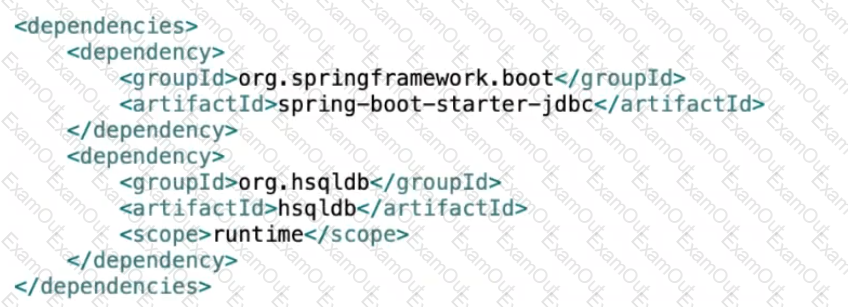Which two are required to use transactions in Spring? (Choose two.)
Which two statements are correct regarding Spring Boot auto-configuration customization? (Choose two.)
Refer to the exhibit.

Assume that the application is using Spring transaction management which uses Spring AOP internally.
Choose the statement that describes what is happening when the update1 method is called? (Choose the best answer.)
Which two statements are correct regarding Spring Boot auto-configuration? (Choose two.)
Which two statements are true concerning constructor injection? (Choose two.)
Which two statements are correct regarding the Actuator info endpoint? (Choose two.)
Which statement about @TestPropertySource annotation is true? (Choose the best answer.)
Which two statements are true regarding Spring Boot Testing? (Choose two.)
Refer to the exhibit.

Which two statements are correct regarding auto-configuration of DataSource and JdbcTemplate beans given a Spring Boot application with only these two dependencies? (Choose two.)
Which two statements are correct regarding the Health Indicator status? (Choose two.)

